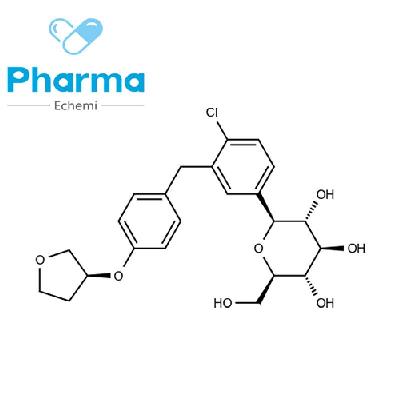-
Categories
-
Pharmaceutical Intermediates
-
Active Pharmaceutical Ingredients
-
Food Additives
- Industrial Coatings
- Agrochemicals
- Dyes and Pigments
- Surfactant
- Flavors and Fragrances
- Chemical Reagents
- Catalyst and Auxiliary
- Natural Products
- Inorganic Chemistry
-
Organic Chemistry
-
Biochemical Engineering
- Analytical Chemistry
-
Cosmetic Ingredient
- Water Treatment Chemical
-
Pharmaceutical Intermediates
Promotion
ECHEMI Mall
Wholesale
Weekly Price
Exhibition
News
-
Trade Service
On March 17, 2022, the journal Science published a research paper
titled: Copper induces cell death by targeting lipoylated TCA cycle proteins.
The study confirmed in human cells that copper-dependent controlled cell death is a new type of cell death different from the known cell death mechanism, and when the known cell death mode is blocked, copper ions can still induce cell death, and the research team named this mode of cell death - Cuproptosis
.
Details: Science Blockbuster Discovery: In addition to iron death, there is also copper death!
On November 23, 2022, the team of Professor Wang Fuxian / Min Junxia published a review paper
entitled: Copper homeostasis and cuproptosis in health and disease in the journal Signal Transduction and Targeted Therapy.
This review systematically summarizes the regulatory mechanism of copper metabolism and the latest progress of diseases related to copper homeostasis imbalance, provides an in-depth interpretation of the newly discovered new death mode of copper death, proposes new strategies for targeting copper death and prevention and treatment of related diseases, and looks forward to the future development direction of the field.
In addition, the characteristics of copper mortality and iron death were compared and considered
.
Copper (Cu) is one of the essential trace elements of the body and plays an important role
in physiological processes including mitochondrial respiration, antioxidant reaction, and biomacromolecule synthesis.
Because both copper deficiency and copper overload can cause damage to cells, the copper content in the cell is maintained within a reasonable range
.
A growing body of research evidence suggests that copper homeostasis imbalance is associated with the occurrence and development of a range of diseases, including Menkes disease, Wilson's disease, neurodegenerative diseases and cancer
.
Cuproptosis is a newly reported novel form
of death caused by excess copper.
Intracellular copper stimulates the lipoylation aggregation process of mitochondria-related proteins, promotes the degradation of Fe-S cluster proteins and protein toxicity, and ultimately leads to cell death
.
This important discovery undoubtedly provides a new perspective
for the treatment of copper metabolic imbalance, especially copper overload-related diseases.
It is of great research value and translational significance
to comprehensively explore the potential mechanism of copper death in the development of related diseases, and to further study the regulatory pathways related to copper death under different pathological backgrounds.
In this review paper, the team of Professor Wang Fuxia/Min Junxia systematically summarizes and discusses relevant issues and discusses future key research directions
with the effective transformation of emerging targets of copper death into the solution of related diseases.
Regulatory mechanism of copper homeostasis
Figure 1: Molecular mechanisms of cellular copper homeostasis regulation
Metabolic regulatory networks for copper death
Copper death is a new type of death that is different from other programmed cell deaths (such as apoptosis, pyrophosis, necrosis and iron death), and its regulatory process is closely related
to mitochondrial metabolism.
Excess copper directly binds to lipoylated proteins in the mitochondrial TCA cycle, resulting in abnormal aggregation of lipoylated proteins and loss of iron-sulfur cluster proteins in the respiratory chain complex, causing protein toxic stress responses and ultimately cell death
.
Figure 2: Diagram of the copper death mechanism pattern
Copper death in Wilson's disease
Wilson's disease is a class of disorders of copper metabolism caused by ATP7B mutations that typically manifest as severe copper accumulation
in the liver and brain.
In the corresponding disease mouse model (Atp7b-/-), the level of lipoylation of proteins in the liver and the content of Fe-S cluster proteins were significantly changed, suggesting that copper death may occur
.
This provides the basis
for subsequent treatment of the disease by targeted copper death.
Disturbance of copper metabolism/copper death in Wilson's disease
Targeting copper death and conquering cancer
Finally, the authors prospect the application prospect of copper death in cancer treatment, and the application of copper ionophore (Cuionophore) specifically induces copper death in cancer cells to achieve the effect
of inhibiting cancer.
It also discussed in depth the current opportunities and challenges
in this field.
Follow-up preclinical research should be based on established phenotypes, including pathological markers and other observational results, through multi-omics in-depth analysis and functional screening, to comprehensively explore the potential role and related mechanisms of copper death in different stages of cancer
, which is conducive to exploring new therapeutic targets and drug development for cancer.
Application of targeted copper death in cancer treatment
The first author of the review paper is Chen Liyun, a postdoctoral fellow at Zhejiang University School of Medicine, and the corresponding authors are Professor Min Junxia and Professor
Wang Fuxia of Zhejiang University.
Min Junxia's team is recruiting postdoctoral fellows, assistant researchers and research assistants to join, if you are interested in, please contact:
junxiamin@zju.
edu.
cn
Wang Fuyu's team recruits postdoctoral fellows, assistant researchers and scientific research assistants to join, if you are interested in, please contact:
fwang@zju.
edu.
cn
Original source:
Chen, L.
, Min, J.
& Wang, F.
Copper homeostasis and cuproptosis in health and disease.
Sig Transduct Target Ther 7, 378 (2022).
https://doi.
org/10.
1038/s41392-022-01229-y.







